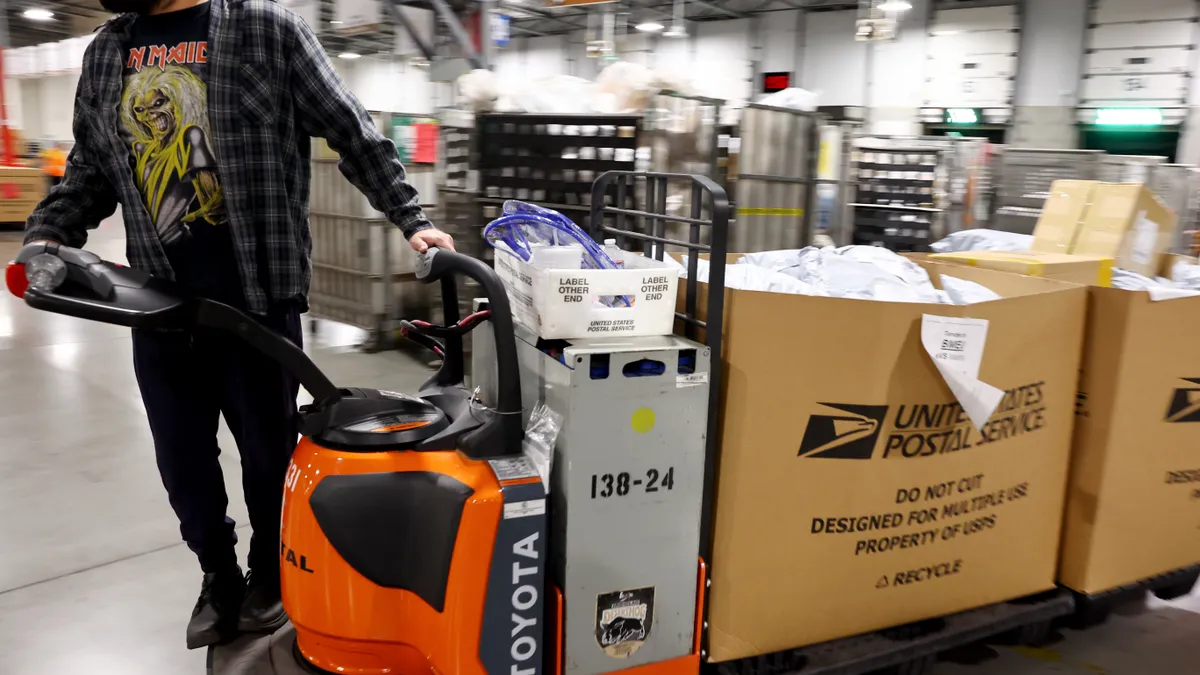Dive Brief:
- The U.S. Postal Service saw $25 million in lost revenue on one of its returns services due to pricing errors on 22.8 million packages, the agency’s Office of Inspector General said in an audit report last week.
- The errors, which occurred between October 2020 and August 2023, were the result of the Postal Service's pricing verification process not tracking the type of facility where Parcel Return Service packages were retrieved from, a key factor in determining rates.
- In a response accompanying the report, agency management agreed with the Office of Inspector General's findings and acknowledged the issue in its pricing process. It plans to move to a new pricing and payment system in 2025, which will factor in facility type into price verification.
Dive Insight:
The Postal Service wants to grow its package returns business as part of its quest to become a more prominent force in the delivery industry alongside FedEx and UPS. Improving its Parcel Return Service — and capturing all the potential revenue it generates — will make the Postal agency's efforts to become a provider of choice in the returns market much easier.
The product generated $241.8 million in revenue for the Postal Service in fiscal year 2022. However, volume declined to 70.3 million returned packages, which marks a 21% drop from fiscal year 2018 despite growth in the overall online returns market.
Through Parcel Return Service, a consumer can return a package to the Postal Service before the agency hands it off to a consolidator to complete the returns process for a merchant. Consolidators can retrieve packages from either USPS delivery units or processing plants, but they pay lower prices for delivery unit pickups.
For nearly 20 million Parcel Return Service packages, the Postal Service accepted an underpayment, in which packages were picked up from plants but were priced at the lower delivery unit rate. The remaining 2.9 million packages were overpayments in which the reverse happened.
Most of the Parcel Return Service underpayments came from two unnamed consolidators, while another was responsible for most of the overpayments. The Postal Service's plans to incorporate facility type in its future Parcel Return Service pricing will help it avoid missing out on more revenue from consolidators.
"If past trends were to continue, we project the Postal Service would lose another $29.4 million through July 2026, in questioned costs," the Office of Inspector General said.














